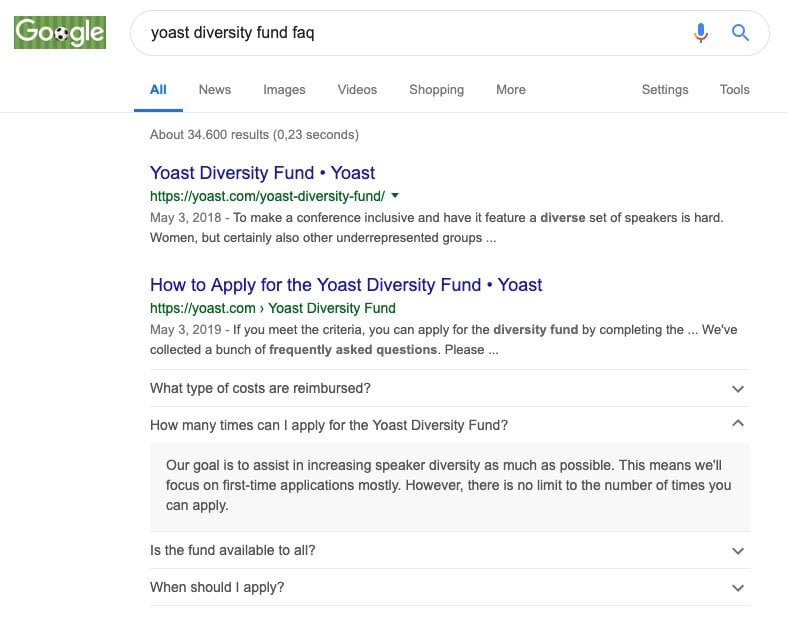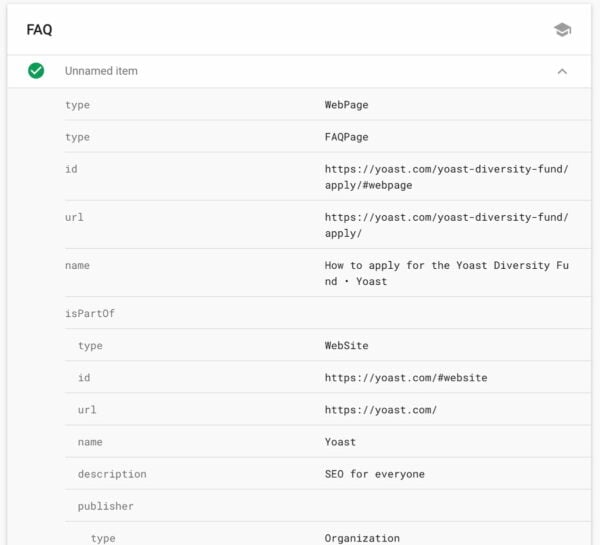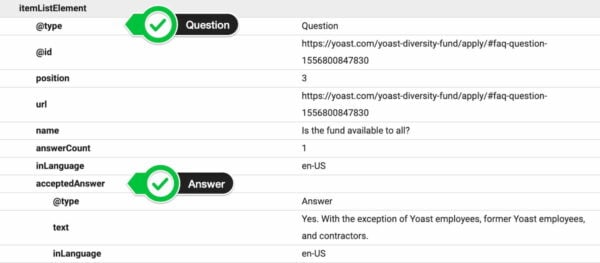Using the content blocks is easy. This is one of the main advantages of the block editor — it’s become a joy to build content like this. If you’re not sure about how it works — or you are still using the classic editor and to take a peak at the blocks — please check the video below. This’ll show you everything you need to know.
What does an FAQ rich result look like?
We have an FAQ page for our Yoast Diversity Fund and Google awarded that page an FAQ rich result after we added an FAQ structured data content block. So, wondering what an FAQ looks like in Google? Wonder no more:

Keep in mind that an FAQ rich result like this might influence the CTR to that page. It might even lead to a decrease in traffic to your site since you are giving away answers instantly. It is a good idea, therefore, to use it only for information that you don’t mind giving away like this. Or you have to find a way to make people click to your site. Do experiment with it, of course, to see the effects. Maybe it works brilliantly for you, who knows?
Read more: Rich results, structured data and Schema: a visual guide to help you understand »
What does this look like under the hood?
Run your new FAQ page through Rich Results Testing Tool to see what it looks like for Google. Yoast SEO automatically generates valid structured data for your FAQ page. Here’s a piece of the FAQ on the Yoast Diversity Fund page:

Let’s take a quick look at how it works. The context surrounding the questions is an FAQPage Schema graph. Every question gets a Question type and an acceptedAnswer with an answer type. The name field in the Question is the question, of course. The acceptedAnswer is the correct answer attached to this specific question.

That sounds hard, but it’s not. This is just what goes on behind the scenes. All you have to remember is fill in the Question and the Answer and Yoast SEO will take care of the rest!

No comments:
Post a Comment